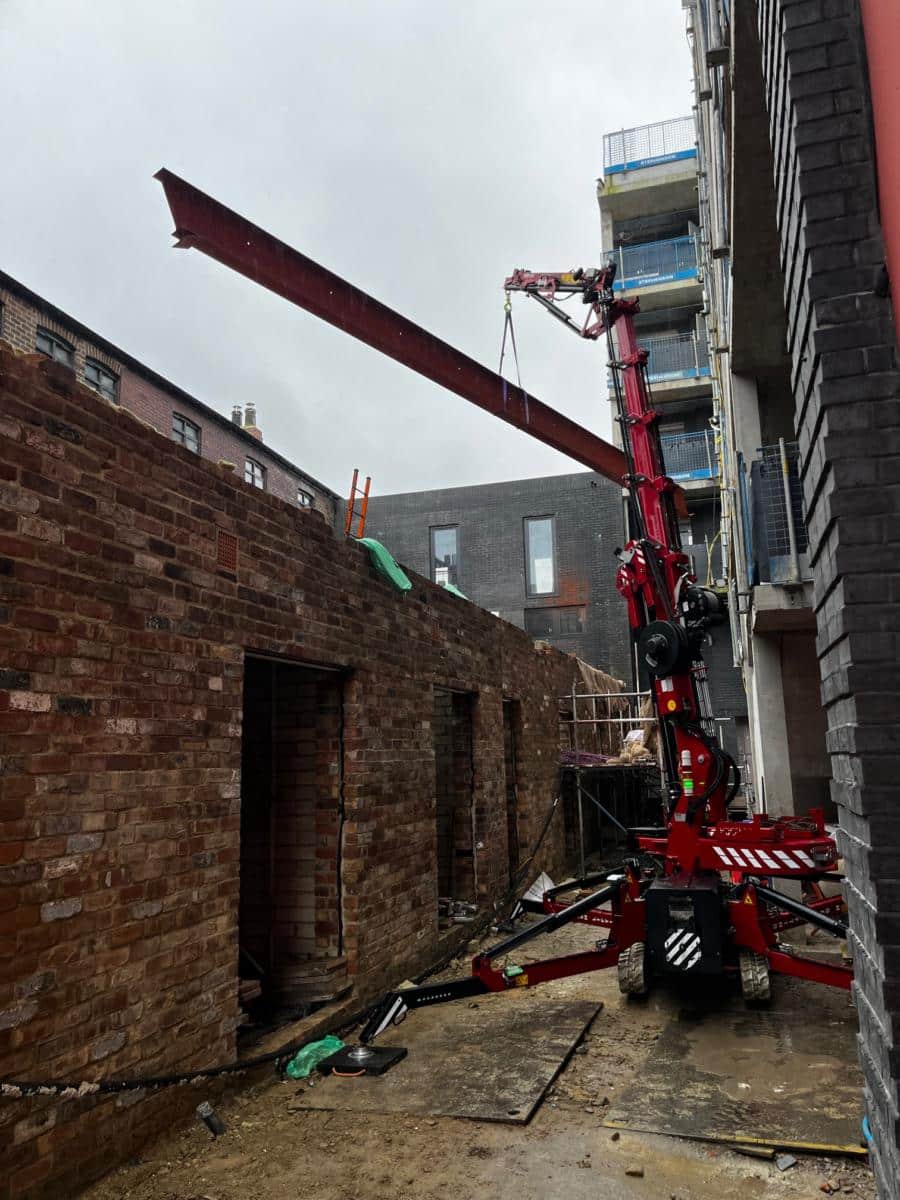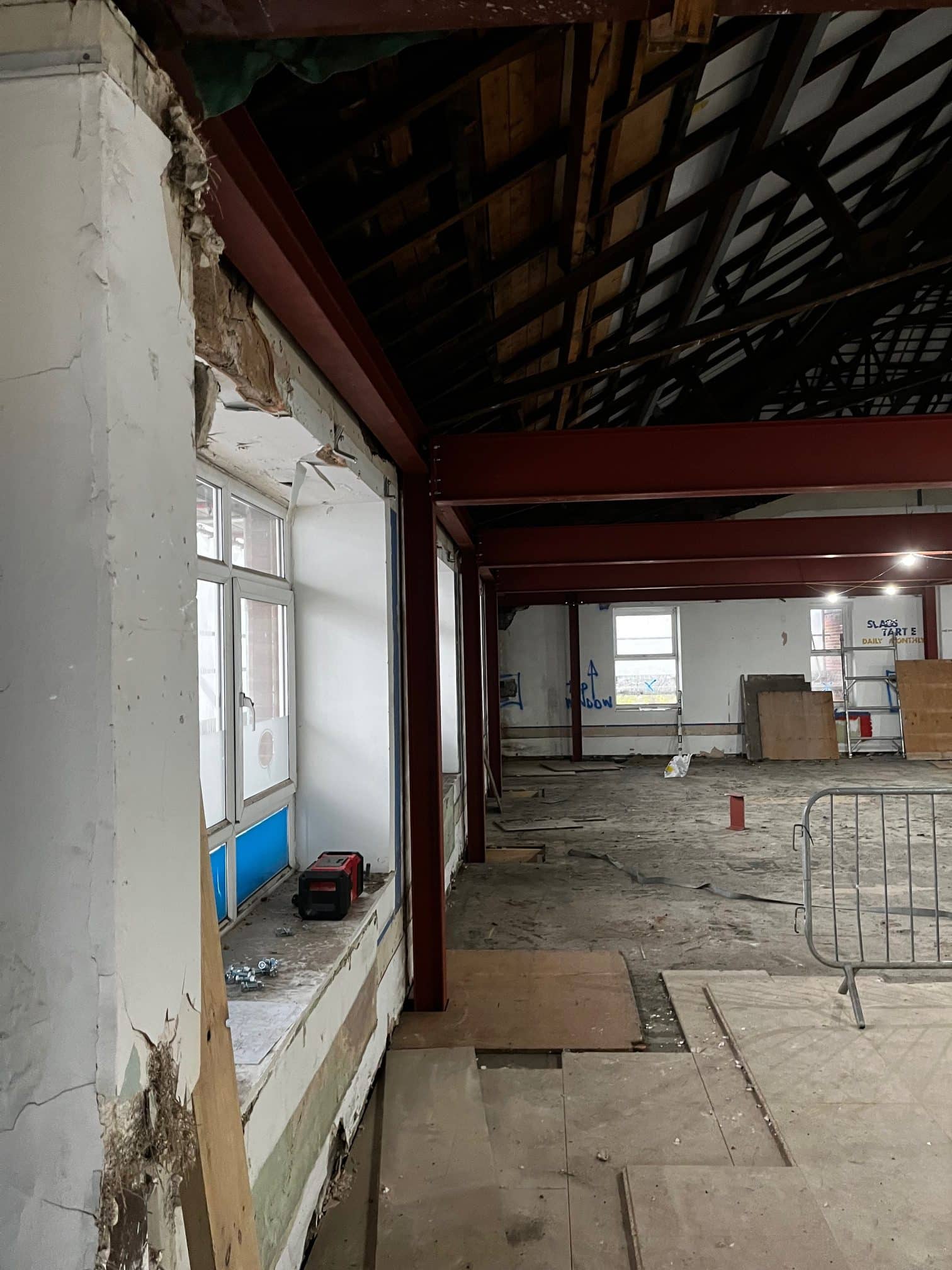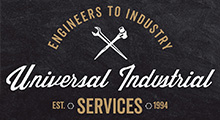
Vast Capabilities To Support Your New Project
Since 1994, we’ve been managing and installing steelwork projects for our clients.
Our bespoke service covers all aspects of design, detail, manufacture, fabrication and installation.
We can provide: Steel portal frames, steel beams, portal frame buildings, staircases & balustrades, mezzanine floors, access platforms, architectural metalwork, and much more.
Contact us for a quote today, or browse our project examples below.
Get a Quote
Contact us below to get a quote for your next project.
Streamline Your Timeline Without Compromising Quality
Every seasoned procurement manager knows that time isn’t just money—it’s momentum.
Delays during construction often cascade, affecting downstream tasks and eroding trust with stakeholders.
That’s why selecting a partner who guarantees both speed and precision is non-negotiable.
Contact Universal Industrial Services today.

Efficient Delivery Matters: Prefabricated metal components arrive on-site, pre-cut and pre-drilled to match exact specifications.
- This allows your team to focus on assembling instead of reworking pieces.
- Smoother collaboration between trades shaves weeks off your timeline.
Use Just-in-Time (JIT) Delivery:
- Minimise on-site storage costs by having parts arrive only when needed.
- Prevent damage to materials during storage or handling.
Digital Coordination Tools Add Precision: Suppliers equipped with tools like Building Information Modelling (BIM) provide real-time updates and proactive conflict resolution.
- For example, ensure frames align with mechanical systems before work begins.
By integrating precise fabrication, JIT delivery, and digital coordination tools, your project runs efficiently from day one.
Ensure Strength, Durability, and Peace of Mind
Why Material Quality is Critical: Metal frameworks are the backbone of modern construction. However, their performance depends on:
- The right grade to meet load demands.
- Treatment processes to improve longevity.
- The finish to protect against environmental factors like corrosion.
Practical Material Choices:
- High-strength, low-alloy (HSLA) steel provides excellent load-bearing capacity without increasing weight, ideal for bridges or multi-storey buildings.
- In corrosive settings such as coastal areas or industrial environments, galvanised or weathering materials are essential to prevent rust and minimise maintenance.
Material Traceability for Confidence:
- Work with suppliers offering traceable documentation to meet stringent quality standards, ensuring you have the records for audits or future reference.
Industry Standards to Verify:
- Materials should conform to BS EN 10025 for structural metalwork and BS EN ISO 14713 for protective coatings.
- Opt for suppliers providing third-party inspections or mill test certificates (MTCs).
Confidence in your materials’ durability translates into confidence in the project’s long-term success.
Maximise Flexibility with Custom Fabrication
Bespoke Solutions for Unique Projects: Standardised solutions often don’t align with complex architectural designs. A partner offering custom fabrication can create tailored designs to:
- Integrate seamlessly with other materials.
- Address specific site conditions or design challenges.
Real-World Example:
A distribution warehouse required a mezzanine floor with specific load tolerances for automated racking systems. Early collaboration with a fabricator resulted in:
- Reinforced columns.
- Additional cross-bracing to distribute weight evenly.
This avoided structural stress and saved the client from costly redesigns after installation.
Advanced Tools for Precision:
- CNC machining and laser cutting deliver exact tolerances, reducing waste.
- Finite element analysis (FEA) detects potential weak points before fabrication begins.
The expertise of a supplier who thrives on complexity transforms your vision into a tangible, problem-free reality.
Stay Within Budget Without Sacrificing Excellence
Why Total Cost of Ownership (TCO) Matters:
Focusing solely on unit costs may overlook hidden expenses. These might include:
- Poor-quality materials leading to rework.
- Delayed deliveries disrupting schedules.
- Excessive on-site adjustments increasing labour hours.
Prefabricated and Modular Components Save Costs:
- Although upfront investment may be higher, they reduce:
- Labour hours.
- Crane rental fees.
- On-site rework expenses.
Eco-Friendly Considerations: Reputable companies source recycled steel, offering both:
- Reduced environmental impact.
- Lower procurement costs, aligning with sustainable construction goals.
Balancing quality, cost, and sustainability ensures financial prudence without undermining project integrity.
Simplify Coordination With End-to-End Support
Integrated Services Reduce Complexity: Framework suppliers providing end-to-end services—covering design, fabrication, delivery, and installation—lighten your workload.
Streamlined Installation:
- A provider delivers structural components and sends site supervisors to oversee installation.
- Familiarity with the product reduces assembly time and sequencing errors.
Avoid Troubleshooting Headaches:
- Having a single point of contact resolves issues quickly and avoids finger-pointing between multiple parties.
Visualise with Digital Twins:
- Digital replicas of your project help you see how the framework interacts with HVAC systems or façade cladding.
- This prevents clashes during construction and ensures seamless integration.
Comprehensive services reduce complexity, giving you the bandwidth to focus on other critical aspects of the build.
Prioritise Safety and Compliance Above All Else
Safety Is the Cornerstone of Success: Strong protocols reduce risks that could jeopardise worker safety or delay schedules.
Safer Practices:
- Pre-welded components eliminate the need for on-site welding, significantly reducing fire hazards and fume exposure.
- Non-destructive testing (NDT) methods, like ultrasonic or magnetic particle testing, verify weld integrity before delivery.
Verify Compliance with Standards:
- Look for partners adhering to CE marking standards to ensure compliance with the European Construction Products Regulation (CPR).
- Comprehensive risk assessments from your supplier further enhance safety during installation.
Partnering with a safety-first provider protects lives, safeguards schedules, and builds a reputation for reliability.
Why the Right Partner Makes All the Difference
What a Reliable Partner Brings: Working with a supplier who offers technical expertise, dependable delivery, and transparent communication:
- Supports project efficiency.
- Ensures compliance with standards.
- Balances quality, costs, and timelines.
With the right partner, every aspect of your project aligns perfectly, from the first beam to the final bolt.
Key Benefits of Steel Structures
- Durability and Longevity:
- Steel structures withstand extreme weather conditions and resist corrosion.
- Buildings with steel frameworks require less maintenance, reducing long-term costs.
In coastal regions, for instance, where salt-laden air can accelerate the corrosion of traditional materials, steel structures coated with protective layers exhibit remarkable resilience and longevity.
- Speed of Construction:
- Prefabricated steel components accelerate the building process.
- Projects can be completed more quickly, minimizing downtime and labor costs.
During a recent hospital expansion in Birmingham, the use of prefabricated steel modules reduced construction time by nearly 30%. This efficiency allowed the facility to become operational much sooner, meeting critical healthcare demands.
- Sustainability:
- Steel is 100% recyclable, aligning with green building practices.
- Its production involves lower carbon emissions compared to other materials.
By utilizing high-recycled content steel and advanced manufacturing processes, projects not only achieve sustainability goals but also qualify for green building certifications like BREEAM and LEED.
- Design Flexibility:
- Steel allows for creative and complex architectural designs.
- Engineers can create more extensive open spaces and adapt structures to future modifications easily.
In urban environments where space is at a premium, the ability to create large column-free spaces with steel is invaluable. This flexibility was crucial in the redevelopment of a historic London market into a modern mixed-use space, blending old and new seamlessly.
Addressing Common Concerns
Cost Efficiency: While initial costs may appear high, steel’s durability and low maintenance lead to significant savings over the building’s lifespan. Moreover, the precision of steel fabrication reduces waste and rework, contributing to overall cost-effectiveness.
Fire Resistance: Modern steel structures are treated with fire-resistant coatings, ensuring safety and compliance with stringent building regulations. These coatings expand when exposed to high temperatures, forming an insulating layer that protects the steel from reaching critical failure temperatures.
Environmental Impact: Opting for steel supports sustainable development goals. Its recyclability reduces waste, and innovations in steel production continue to lower its environmental footprint. New technologies, such as electric arc furnaces, significantly reduce the carbon emissions associated with steel manufacturing.
Real-World Application and Implications
In a recent project managing the construction of a mixed-use development in London, steel’s use resulted in an expedited timeline and a structurally sound building that exceeded client expectations. The integration of steel not only supported innovative design but also ensured compliance with urban planning requirements.
For instance, during the refurbishment of an old industrial site, steel’s adaptability enabled the preservation of heritage elements while integrating modern structural needs. This approach not only met regulatory requirements but also enhanced the project’s aesthetic and cultural value.
Making Informed Decisions
Understanding the significance of steel in construction empowers you to advocate for its benefits in your projects. Ensure that your team and stakeholders are aware of:
- The strength and reliability of steel structures.
- The cost-effectiveness over the building’s life cycle.
- The sustainability benefits contributing to environmental goals.
In a nutshell, leveraging steel in your construction projects will drive efficiency, innovation, and sustainability, ultimately leading to successful and impactful developments.
By focusing on these critical aspects, you can confidently steer your projects towards success, ensuring that each building stands as a testament to quality and forward-thinking design.











































